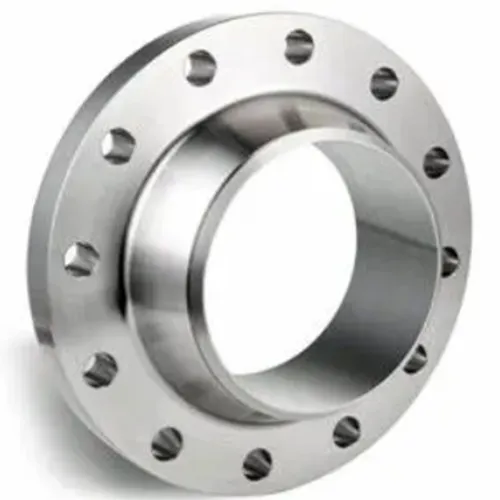-
Cangzhou Yulong Steel Co., Ltd.
-
Phone:
+86 13303177267 -
Email:
admin@ylsteelfittings.com
- English
- Arabic
- Italian
- Spanish
- Portuguese
- German
- kazakh
- Persian
- Greek
- French
- Russian
- Polish
- Thai
- Indonesian
- Vietnamese
- Zulu
- Korean
- Uzbek
- Hindi
- Serbian
- Malay
- Ukrainian
- Gujarati
- Haitian Creole
- hausa
- hawaiian
- Hebrew
- Miao
- Hungarian
- Icelandic
- igbo
- irish
- Japanese
- Javanese
- Kannada
- Khmer
- Rwandese
- Afrikaans
- Albanian
- Amharic
- Armenian
- Azerbaijani
- Basque
- Belarusian
- Bengali
- Bosnian
- Bulgarian
- Catalan
- Cebuano
- China
- China (Taiwan)
- Corsican
- Croatian
- Czech
- Danish
- Esperanto
- Estonian
- Finnish
- Frisian
- Galician
- Georgian
- Kurdish
- Kyrgyz
- Lao
- Latin
- Latvian
- Lithuanian
- Luxembourgish
- Macedonian
- Malgashi
- Malayalam
- Maltese
- Maori
- Marathi
- Mongolian
- Myanmar
- Nepali
- Norwegian
- Norwegian
- Occitan
- Pashto
- Dutch
- Punjabi
- Romanian
- Samoan
- Scottish Gaelic
- Sesotho
- Shona
- Sindhi
- Sinhala
- Slovak
- Slovenian
- Somali
- Sundanese
- Swahili
- Swedish
- Tagalog
- Tajik
- Tamil
- Tatar
- Telugu
- Turkish
- Turkmen
- Urdu
- Uighur
- Welsh
- Bantu
- Yiddish
- Yoruba

Dec . 16, 2024 00:08 Back to list
2 Inch Mandrel Bent Pipe for Efficient Exhaust System Design and Fabrication Solutions
Understanding 2 Inch Mandrel Bent Pipe A Comprehensive Overview
In the world of metal fabrication and piping, mandrel bending is a technique that holds significant importance, particularly when dealing with cylindrical pipes and tubes. With a specific focus on a 2 inch mandrel bent pipe, it's essential to explore what this entails, how it's performed, and its applications across various industries.
What is Mandrel Bending?
Mandrel bending is a process used to bend metal tubes or pipes while maintaining their internal diameter and structural integrity. Unlike conventional bending methods that can cause the pipe to deform or collapse, mandrel bending utilizes a tool called a mandrel. This tool is inserted into the pipe and holds its shape while the bending occurs, thereby preventing kinks and ensuring smooth, uniform curves.
The term mandrel refers to a support that keeps the shape of the bend intact. This process is particularly crucial for applications where aesthetics and flow dynamics are important. For instance, in automotive exhaust systems, a smooth flow of gases is necessary to optimize performance.
Specifications and Dimensions
The term “2 inch mandrel bent pipe” indicates a specific size of pipe being bent using the mandrel method. In practical terms, this translates to a nominal pipe diameter of two inches. The “ ” might suggest a common formatting error, likely intended to indicate a space between words or a specific designation in a technical context.
In pipe design, the key dimensions that matter include the outer diameter, wall thickness, and the bend radius. Typically, for a 2-inch pipe, the wall thickness and bend radius can vary based on the requirements of the application. The bending process significantly influences these specifications, ensuring compatibility with fittings, flanges, and other components.
Advantages of Mandrel Bent Pipes
2 inch mandrel bent pipe

1. Maintained Flow Characteristics One of the primary benefits of mandrel bending is the preservation of the internal diameter throughout the bend. This results in minimal turbulence and maximizes flow efficiency, especially crucial in fluid transport systems.
2. Enhanced Aesthetic Appeal For exposed applications, such as in automotive modifications or architectural designs, the smooth curves and clean finishes of mandrel bent pipes add significant visual appeal.
3. Durability and Strength The mandrel bending process helps in maintaining the strength of the material. Unlike other bending techniques that can introduce weak points, the mandrel method ensures that the material retains its integrity.
4. Versatility Mandrel bent pipes can be created in a variety of materials, including stainless steel, aluminum, and more. This versatility makes them suitable for various applications ranging from automotive to industrial machinery.
Applications
Mandrel bent pipes are widely utilized across numerous sectors. In the automotive industry, they are commonly found in exhaust systems, turbochargers, and roll cages. In the aerospace sector, their lightweight yet robust characteristics make mandrel bends ideal for structural components and fluid delivery systems.
Additionally, mandrel bent pipes find their way into construction and architecture, being used in handrails, railings, and other aesthetic installations. Their ability to provide not only functionality but also an appealing finish makes them a preferred choice in both industrial and commercial applications.
Conclusion
The 2 inch mandrel bent pipe is an excellent illustration of how engineering techniques can combine both practicality and aesthetics. By ensuring the integrity of the material while allowing for complex shapes, mandrel bending stands out as a premier choice for metal fabrication. As industries continue to evolve, the demand for specialized components like mandrel bent pipes will likely grow, enhancing functionality in a variety of applications. Understanding these nuances can empower engineers and fabricators to make the best choices for their projects, leading to innovative solutions in many fields.
Latest news
-
ANSI 150P SS304 SO FLANGE
NewsFeb.14,2025
-
ASTM A333GR6 STEEL PIPE
NewsJan.20,2025
-
ANSI B16.5 WELDING NECK FLANGE
NewsJan.15,2026
-
ANSI B16.5 SLIP-ON FLANGE
NewsApr.19,2024
-
SABS 1123 FLANGE
NewsJan.15,2025
-
DIN86044 PLATE FLANGE
NewsApr.19,2024
-
DIN2527 BLIND FLANGE
NewsApr.12,2024
-
JIS B2311 Butt-Welding Fittings LR/SR 45°/90° /180°Seamless/Weld
NewsApr.23,2024











